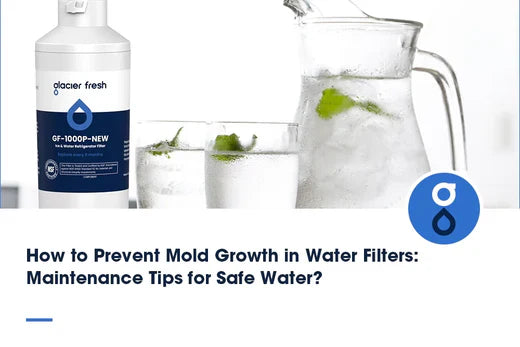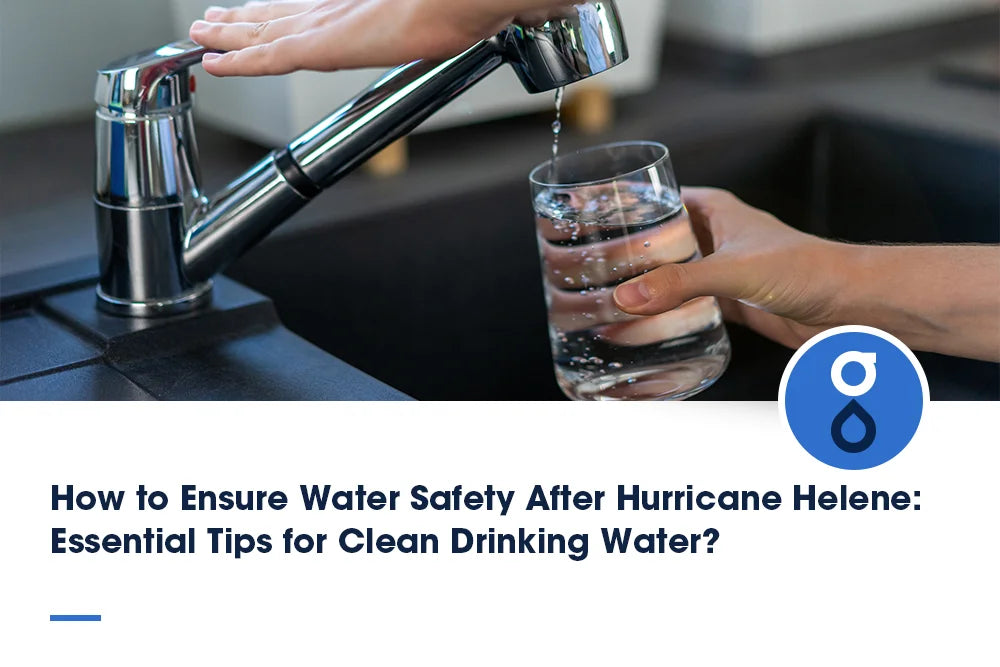Table of Contents:
What are Haloacetic acids(HAAs)?
Health risks of haloacetic acids in drinking water
How do you detect haloacetic acids in water?
How do you remove haloacetic acids from drinking water?
FAQs
Conclusion
Drinking water is essential for health, yet contaminants can pose significant risks. Among these contaminants are haloacetic acids (HAAs), byproducts formed when chlorine or other disinfectants react with organic matter in water. While chlorine is widely used to disinfect drinking water, its interaction with natural materials can lead to the formation of HAAs, which may jeopardize public health. This blog explores the harmful effects of HAAs, how they form, and effective methods for removing them from your drinking water.
What are Haloacetic acids(HAAs)?

Haloacetic acids include various species, such as monochloroacetic acid, dichloroacetic acid, trichloroacetic acid, monobromoacetic acid, and dibromoacetic acid. They primarily form during the chlorination process used in municipal water treatment systems, where chlorine reacts with organic materials in water sources, such as decaying vegetation and microorganisms.
The Environmental Protection Agency (EPA) regulates HAAs in drinking water, setting a maximum contaminant level of 0.060 mg/L. Monitoring these levels is crucial, as exposure can lead to adverse health effects, particularly prolonged consumption.
Health risks of haloacetic acids in drinking water
The health implications associated with HAAs have raised considerable concern among health officials and researchers. Some of the main risks include:
Cancer risk
Studies have indicated a correlation between long-term exposure to HAAs and an increased risk of certain cancers, particularly bladder and colorectal cancer. The International Agency for Research on Cancer (IARC) classifies some HAAs as possibly carcinogenic to humans, raising alarm over their presence in drinking water.
Reproductive and developmental issues
Research has suggested that HAAs may pose risks to reproductive health. Pregnant women exposed to higher levels of HAAs could experience adverse effects on fetal development, potentially leading to low birth weight or developmental delays in children.
Effects on the liver, kidneys, and nervous system
HAAs can accumulate in the body, leading to toxic effects on vital organs. Prolonged exposure has been linked to liver and kidney damage, as well as adverse effects on the nervous system, which can impact cognitive and motor functions.
Sensitive populations
Certain groups, including pregnant women, children, the elderly, and individuals with compromised immune systems, are particularly vulnerable to the harmful effects of HAAs. These populations must be aware of their water quality and take necessary precautions.
How do you detect haloacetic acids in water?

Detecting HAAs in your drinking water is the first step in addressing potential risks. Here are some methods to identify their presence:
- Signs of contamination: A strong chlorine smell or chemical taste in your water may indicate the presence of HAAs.
- Home water testing kits: Various kits can test for HAAs and other contaminants. These kits are user-friendly and can provide quick results.
- Laboratory testing services: Consider sending a water sample to a certified laboratory for more accurate and detailed analysis. They can conduct comprehensive tests for HAAs and other contaminants.
- Municipal water monitoring: Regular monitoring by local water authorities is crucial. Check annual water quality reports or contact your water provider to inquire about HAA levels in your supply.
How do you remove haloacetic acids from drinking water?

If your water tests positive for HAAs, several effective removal methods can help ensure your drinking water is safe:
Reverse osmosis (RO) systems
Reverse osmosis systems are highly effective at removing HAAs from drinking water. This technology forces water through a semipermeable membrane, which filters out various contaminants, including HAAs. RO systems are ideal for households seeking comprehensive water purification solutions.
Granular activated carbon (GAC) filters
Granular activated carbon filters are another effective option for reducing HAAs. These filters absorb contaminants through a process known as adsorption. When water passes through the GAC filter, HAAs are trapped, improving the water quality. GAC filters can be installed as point-of-use systems, such as under-sink or pitcher filters, providing accessible solutions for households.
Chloramine as an alternative to chlorine
Some municipalities are shifting from chlorine to chloramine as a primary disinfectant. Chloramine forms fewer HAAs during disinfection, making it a safer alternative for reducing HAA levels in drinking water. While chloramine may not eliminate HAAs, it can significantly decrease their formation. However, switching disinfectants requires careful consideration, as chloramine has its own set of advantages and challenges.
UV light treatment and advanced oxidation processes (AOPs)
Ultraviolet (UV) light treatment is another promising method for breaking down organic compounds, including HAAs. UV technology can effectively neutralize many contaminants, providing additional protection. Advanced oxidation processes (AOPs), which combine UV light with chemical oxidants, can further enhance the breakdown of HAAs, ensuring cleaner water.
FAQs
Is it safe to drink water with low levels of HAAs?
While low levels of HAAs may not pose immediate health risks, it is essential to be cautious and consider filtration options if contamination is detected.
How do I know if my water contains HAAs?
Testing your water using home testing kits or sending samples to a certified laboratory can help determine HAA levels.
How often should I replace filters to ensure the effective removal of HAAs?
It is crucial to regularly replace filters according to manufacturer guidelines. Check filter capacity and replace them promptly to maintain optimal performance.
Conclusion
Haloacetic acids are a concerning contaminant in drinking water and are associated with various health risks. Understanding the dangers of HAAs and taking proactive measures to remove them is essential for safeguarding your health. By employing effective filtration systems, testing water quality, and advocating for better water treatment practices, you can ensure your drinking water is safe and free from harmful contaminants. Stay informed and make educated choices about your water quality for a healthier future with Glacier Fresh.
















